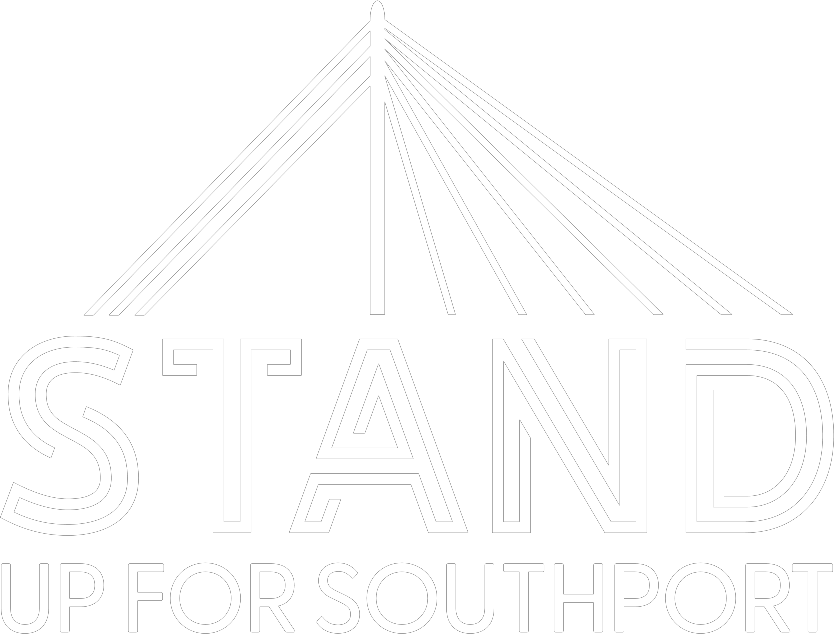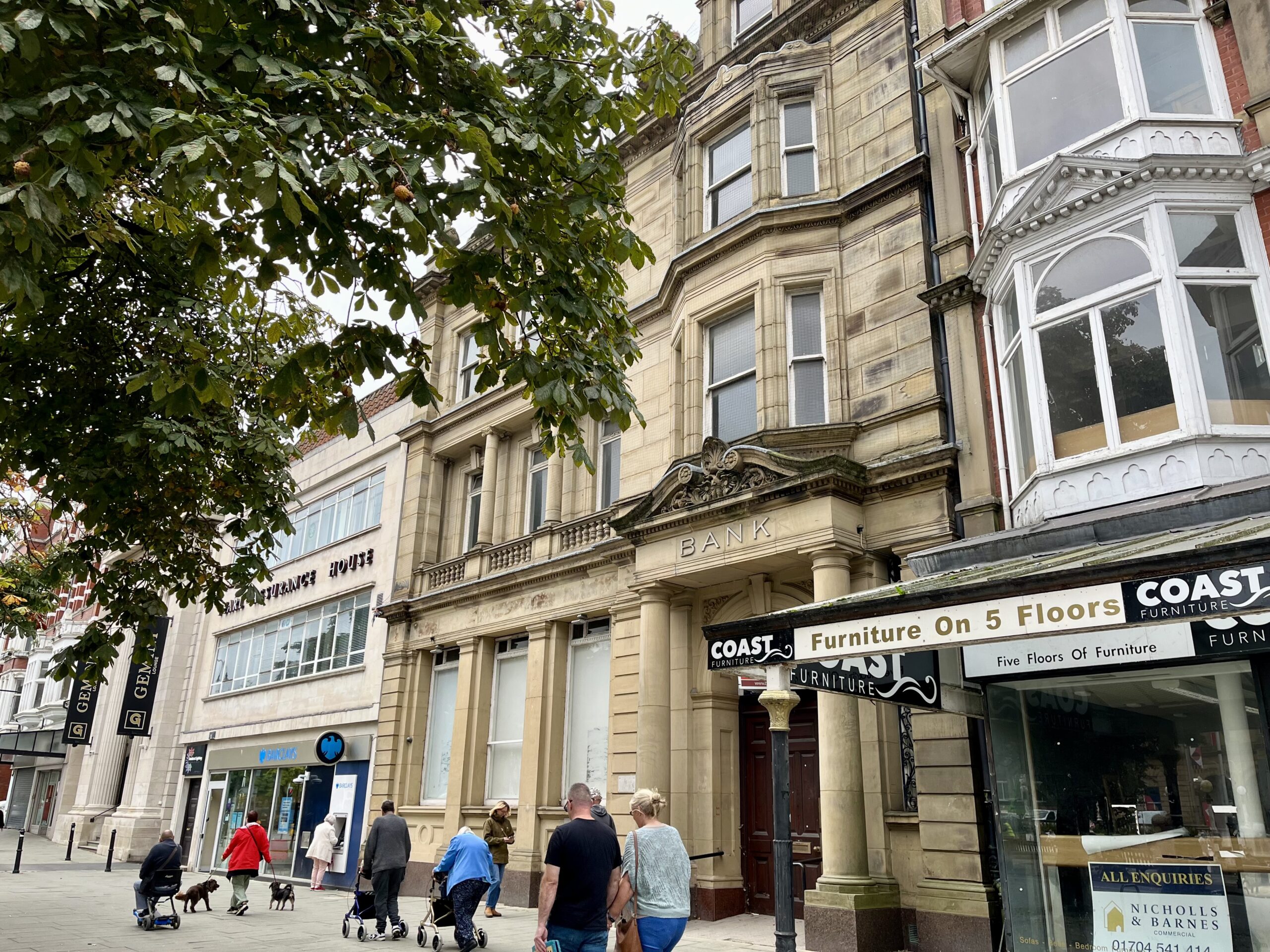Proposals have been revealed to revamp an historic former bank building on Lord Street in Southport town centre in a scheme that will “future proof it for years to come”.
The Grade II Listed landmark at 269 Lord Street was closed by the Royal Bank Of Scotland in March 2022 and has remained vacant ever since.
Ambitions are now being put into place to create new commercial space on the ground floor while creating nine new residential apartments on the first, second and third floors.
Heritage features including the windows and facade would be restored, at a building which was built in or around the Victorian era.
It is part of a recent resurgence which has seen a series of new businesses opening on ground floor units along the Lord Street boulevard.
There has also been an increasing drive, supported by Sefton Council and Southport Townscape Heritage Project, to see empty upper floors in Southport town centre being converted into residential use, creating much-needed new homes for families and adding footfall to the area.
A planning application has been submitted to Sefton Council for the scheme.
Other new developments on Lord Street this year include the new Sky Bar and Harry’s Bar on the top floor of The Grand; planning permission granted to convert The Garrick into the UK’s first theatre-spa-hotel; the expansion of the Volare Italian restaurant and Kalash Diving Indian restaurant; the opening of the new Clare Wright Art Gallery; several new local businesses inside Wayfarers Shopping Arcade; and more.
In the planning application for 269 Lord Street, Ainsley Gommon Architects said: “Our proposals aim to rationalise the building and create functional apartments, suitable for 21st century living, that can sit alongside, but operate independently of, an existing ground floor commercial space ready to be operated by others.
“The proposals will bring this vacant building back into use and future proof it for years to come.
“Its historic assets and details of the building will be retained as per the requirements of its listed status.
“In common with many of the properties on this side of Lord Street, 269 was built in a short period of time when Lord Street was undergoing a great deal of development, between approximately 1880 and 1910.

“It is among 175 Listed buildings that are either Grade 2 or Grade 2* listed in the vicinity.
“There are no Grade 1 buildings, but there are a number of significant Conservation Areas covering a large part of the town centre.
“Many of the significant buildings in the town are located on Lord Street and date from the period between 1880 and 1920 when a great deal of commercial and tourism development took place in the resort.
“269 Lord Street sits within the heart of the Lord Street conservation area, and forms an important part of the town’s history.
“Residential apartments located above commercial units along Lord Street, and the wider area as a whole, are becoming a more common feature of the town centre. The site is therefore considered to be well located for both commercial and residential use.”
The ground floor was previously in use as a banking hall, with offices, strongroom, vault and amenity spaces associated with the banking hall.
The first, second and third floors were previously in use as offices, storage, and staff facilities. Ainsley Gommon Architects said: “There is some evidence of roof damage that needs repairing in the near future, otherwise there is likely to be a significant amount of damage to the building and rectification work required.
“Externally, the intention is to mainly retain the elevation as they currently are. The front elevation, facing onto Lord Street, will have no changes.
“The main entrance door will be rehung to the opposite orientation, or replaced with a new door to match the existing, to allow the separation of the access for the commercial and residential spaces respectively. It is also intended to restore all of the windows to their former glory on all of the floors.
“The external areas will consist of parking spaces and areas for bin stores and cycle parking. “The parking provision will serve the apartments only, and will be accessed via the existing gates at the rear of the site.”
A Heritage Statement prepared by Ainsley Gommon Architects said: “269 Lord Street is a landmark building that makes a notable contribution to the streetscape of Lord Street, but as a solely commercial building, is likely to remain vacant for the foreseeable future.
“The proposal to convert the upper floors into a residential purpose will bring the building back into use, and secure its future by providing high quality accommodation in a desirable area.
“The combined use of commercial space at ground level and residential space at the upper levels will help to restore the building and give it a viable purpose, as well as helping to regenerate the surrounding area.”
The Royal Bank Of Scotland branch that previously occupied the site closed on 22rd March 2022, leaving Southport without any RBS branches.
The firm blamed an increase in people using mobile and online services and decreasing numbers of people using the building itself.
Customers were instead being asked to use the NatWest branch on Lord Street instead.
The firm has closed a number of RBS and NatWest branches in Southport in recent years, including in Churchtown and Ainsdale.
The company said that between 2017 and 2019, counter transactions for personal customers at the branch decreased by 13% and the branch was used by 24 personal customers on a regular basis in 2019.
Do you have a story for Stand Up For Southport? Please message Andrew Brown via Facebook here or email me at: mediaandrewbrownn@gmail.com






